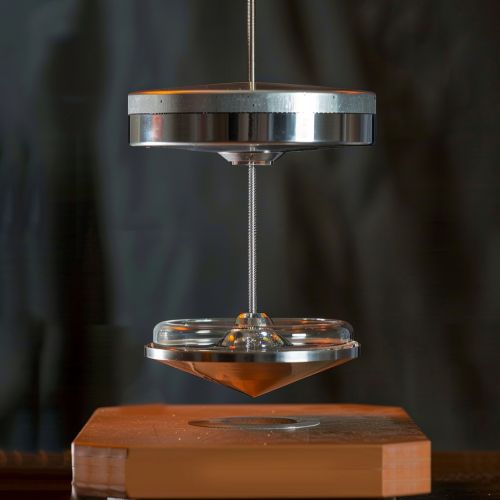Superconductors
Introduction
Superconductors are materials that can conduct electricity without resistance when they are cooled below a certain critical temperature. This phenomenon, known as superconductivity, was first discovered by Heike Kamerlingh Onnes in 1911. Superconductors have unique properties that make them valuable in various technological applications, including magnetic resonance imaging (MRI), particle accelerators, and quantum computing.
Properties of Superconductors
Superconductors exhibit several distinctive properties:
Zero Electrical Resistance
One of the most remarkable properties of superconductors is their zero electrical resistance. When a material becomes superconducting, it can conduct an electric current indefinitely without any energy loss. This is in stark contrast to normal conductors, which always have some resistance and thus dissipate energy as heat.
Meissner Effect
The Meissner effect is another fundamental property of superconductors. When a material transitions into the superconducting state, it will expel all magnetic fields from its interior, a phenomenon known as perfect diamagnetism. This effect was discovered by Walther Meissner and Robert Ochsenfeld in 1933.


Critical Temperature
The critical temperature (Tc) is the temperature below which a material becomes superconducting. Different materials have different critical temperatures, and finding materials with higher critical temperatures is a major area of research in the field of superconductivity.
Critical Magnetic Field and Critical Current Density
Superconductors also have critical magnetic fields and critical current densities. If the applied magnetic field or the current density exceeds these critical values, the material will revert to its normal, non-superconducting state.
Types of Superconductors
Superconductors are generally classified into two main types:
Type I Superconductors
Type I superconductors are characterized by a single critical magnetic field. Below this field, they exhibit perfect diamagnetism and zero resistance. When the magnetic field exceeds this critical value, the material becomes normal. Type I superconductors are typically pure elemental metals such as lead and mercury.
Type II Superconductors
Type II superconductors have two critical magnetic fields: a lower critical field and an upper critical field. Between these two fields, the material allows partial penetration of the magnetic field in the form of vortices, while still maintaining zero resistance. Type II superconductors include most high-temperature superconductors and are usually complex compounds or alloys.
High-Temperature Superconductors
High-temperature superconductors (HTS) are materials that become superconducting at temperatures significantly higher than those of conventional superconductors. The first high-temperature superconductor was discovered in 1986 by Johannes Georg Bednorz and Karl Alexander Müller, who found that a lanthanum barium copper oxide (LaBaCuO) compound became superconducting at 35 K.
Cuprate Superconductors
Cuprate superconductors are a family of high-temperature superconductors that contain copper-oxide planes. These materials have complex crystal structures and can exhibit superconductivity at temperatures as high as 133 K. Examples include yttrium barium copper oxide (YBCO) and bismuth strontium calcium copper oxide (BSCCO).
Iron-Based Superconductors
Iron-based superconductors are another class of high-temperature superconductors discovered in 2008. These materials contain layers of iron and a pnictogen (such as arsenic) or a chalcogen (such as selenium). They have critical temperatures up to 55 K and are of great interest due to their potential for practical applications.
Applications of Superconductors
Superconductors have a wide range of applications due to their unique properties:
Magnetic Resonance Imaging (MRI)
MRI machines use superconducting magnets to generate strong and stable magnetic fields, which are essential for producing high-resolution images of the human body.
Particle Accelerators
Superconducting magnets are used in particle accelerators to steer and focus particle beams. The Large Hadron Collider (LHC) at CERN is one of the most famous examples of a facility that relies on superconducting technology.
Quantum Computing
Superconductors are also crucial in the development of quantum computers. Superconducting qubits, which are the basic units of quantum information, can maintain quantum coherence for longer periods, making them ideal for quantum computation.
Power Transmission
Superconducting cables can transmit electricity with zero energy loss, making them highly efficient for power transmission over long distances.
Challenges and Future Directions
Despite their promising applications, superconductors face several challenges:
Cooling Requirements
Most superconductors require extremely low temperatures to function, which necessitates complex and expensive cooling systems. Research is ongoing to discover materials that can become superconducting at higher temperatures, ideally at or above room temperature.
Material Synthesis
The synthesis of high-temperature superconductors often involves complex and costly processes. Improving the manufacturing techniques to produce these materials more efficiently and at a lower cost is a significant area of research.
Stability and Scalability
Ensuring the stability and scalability of superconducting materials for practical applications is another challenge. Researchers are working on developing materials that can maintain their superconducting properties under various conditions and can be produced on a large scale.
Conclusion
Superconductors represent a fascinating and rapidly evolving field of study with significant implications for technology and industry. From medical imaging to quantum computing, the unique properties of superconductors offer numerous possibilities for innovation. Continued research and development are essential to overcome the current challenges and unlock the full potential of superconducting materials.
